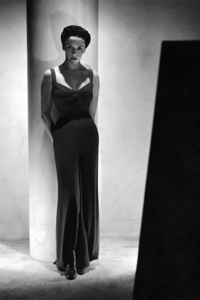Culture, Fashion, Femininity Theme of Harriot College Research Award
Dr. Allison Danell, dean of the Thomas Harriot College of Arts and Sciences, is pleased to announce that Dr. Marylaura Papalas, associate professor in the Department of Foreign Languages and Literatures, is the recipient of the 2025-26 Harriot College Research Award.

Dr. Marylaura Papalas, associate professor in the Department of Foreign Languages and Literatures, is the recipient of the 2025-26 Harriot College Research Award. (Contributed photo)
The award provides support that allows departments to reassign faculty for a semester in recognition of their need to have sustained and dedicated periods to devote to a project involving research or creative activity. Applications are reviewed by a faculty committee representing the breadth of the liberal arts and sciences, who then submit applications to the dean.
When reviewing award proposals, the committee said Papalas’ proposed book project was excellent, citing the strength of her research record and the ability of the project to reach a wide variety of scholars with its cross-cultural approach.
“I am very pleased to support Dr. Papalas’ scholarly pursuits, and I wish her the best for continued success at ECU,” Danell said.
Hearing that her proposal was selected for the award, Papalas said, “I am deeply honored and grateful. It is wonderful to be part of a research community that has access to this kind of support.”
Papalas teaches French and Francophone studies, and her research expertise lies in women writers and artists of the French avant-garde. She focuses on themes of gender, identity, urbanism and fashion in their work and representations of their work in journalistic, literary and popular culture.
Her proposal, “Wearing Schiaparelli: Culture and Couture Between the Wars,” presents a unique look at womanhood, femininity and sexuality through the lens of fashion in the period between World War I and II.
Papalas’ interest in Elsa Schiaparelli—an Italian fashion designer known for her unconventional and artistic themes—was piqued when researching French interwar avant-garde

Eve Curie is seen in this photograph wearing a floor-length Schiaparelli gown for the April 15, 1938, edition of Vogue. (Photo by Horst P. Horst)
writers and artists with whom Schiaparelli collaborated.
“I noticed how their experimental aesthetics made their way into popular culture and shaped perceptions about everything from politics to gender performance to fashion,” Papalas said. “I wanted to learn more about the women who wore Schiaparelli in 1930s film, theater, print media and literature, and how they refashioned definitions of womanhood and femininity.”
As an example, Papalas shares a photograph of Eve Curie, daughter of the famous scientist Marie Curie and a friend of Schiaparelli. Photographed by Horst P. Horst, the image was published in the April 15, 1938, edition of Vogue as part of a feature on Curie’s biography of her mother. Curie is wearing a floor-length Schiaparelli gown.
“Her choice to wear Schiaparelli, a decision made by many important interwar women for the most consequential moments of their lives, underscores the brand’s potential to project messages of empowerment and success,” Papalas said.
After completing her book, Papalas hopes readers will learn how “Schiaparelli was an integral figure in 1930s Transatlantic cultural production and that her designs engaged in important discussions about the role of women in society.”
